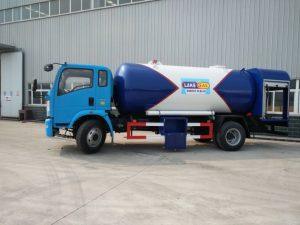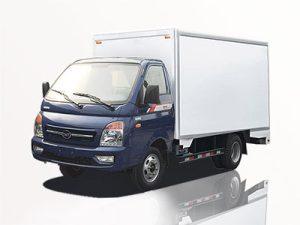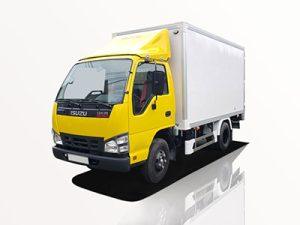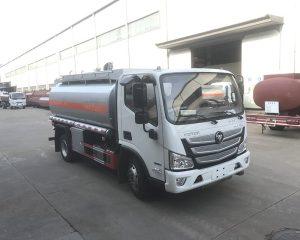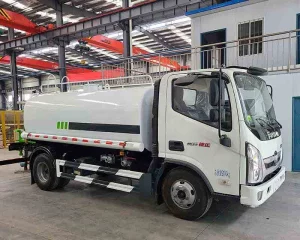Monday to Saturday - 8:00 -17:30
Gas Delivery Truck: The Essential Guide to Understanding Its Importance
Introduction
Gas delivery trucks play a vital role in the distribution of petroleum products, ensuring that fuel reaches various locations efficiently and safely. These specialized vehicles are designed to transport liquid fuels such as gasoline, diesel, propane, and more to gas stations, industrial sites, and residential areas. This comprehensive article aims to provide readers with a thorough understanding of gas delivery trucks, including their design, operation, safety measures, and the technology behind them.
Understanding the Basics of Gas Delivery Trucks
What is a Gas Delivery Truck?
A gas delivery truck is a specialized vehicle designed to transport liquid fuel products. These trucks come equipped with tanks that can store and dispense various types of fuels. The trucks are built to comply with strict safety regulations to prevent leaks and spills during transportation.
The Different Types of Gas Delivery Trucks
There are several kinds of gas delivery trucks tailored for specific fuels and purposes:
- Tank Trucks: These are the most common types of gas delivery trucks, used for transporting gasoline and diesel.
- Propane Delivery Trucks: These trucks are designed specifically for hauling propane, featuring specialized safety equipment.
- Fuel Oil Trucks: Used primarily for heating oil, these trucks often have insulated tanks.
Key Components of a Gas Delivery Truck
Fuel Tank
The fuel tank is the central component of a gas delivery truck, made from materials such as steel or aluminum to withstand high pressure. These tanks are often compartmentalized to allow for the transportation of multiple fuel types:
| Type of Fuel | Common Tank Material |
|---|---|
| Gasoline | Aluminum |
| Diesel | Steel |
| Propane | Carbon Steel |
Pump and Dispensing Mechanism
The pumping system is designed to transfer fuel from the tank to the delivery destination. This can include:
- Positive Displacement Pumps: These pumps are common for oil and fuel delivery.
- Centrifugal Pumps: Used for high-volume transfers, especially in gasoline deliveries.
Safety Features
Safety is paramount in the operation of gas delivery trucks. Key safety features include:
- Overfill Protection: A system that prevents the tank from exceeding its capacity.
- Vapor Recovery Systems: To capture vapors and reduce emissions during loading and unloading.
- Emergency Shutoff Valves: Allow for quick disconnection in case of leak detection.
The Operational Process of Gas Delivery Trucks
Loading Fuel
Loading fuel into a gas delivery truck requires strict adherence to safety protocols. Operators must connect hoses properly, follow grounding procedures, and utilize proper protective gear.
Transportation
During transportation, drivers must comply with traffic regulations, ensure secure load management, and perform regular safety checks of the vehicle.
Unloading Fuel
Unloading fuel involves careful calibration of measurement systems to avoid overfilling or spillage. Deliveries are often monitored through digital systems to log the amount delivered and maintain inventory accuracy.
Regulations Governing Gas Delivery Trucks
Federal Regulations
In the United States, gas delivery trucks are subject to regulations set forth by the Department of Transportation (DOT) and the Environmental Protection Agency (EPA). Key regulations include:
- Tank standards for construction and maintenance.
- Driver certification and training requirements.
- Regular vehicle inspections and compliance checks.
State and Local Regulations
Different states may have additional regulations concerning gas delivery trucks, focusing on local environmental laws and safety standards. It is essential for operators to be familiar with these regulations to avoid fines and penalties.
Emerging Technologies in Gas Delivery Trucks
GPS and Fleet Management Systems
Modern gas delivery operations increasingly rely on GPS technology for route planning and fleet management. These systems help optimize delivery routes, reducing fuel consumption and improving customer service.
Automated Dispensing Systems
Automated systems enhance precision in fuel dispensing, minimizing human error and speeding up the delivery process. Integration with inventory management systems allows for real-time tracking of fuel levels.
Alternative Fuels and Electric Trucks
With the ongoing shift towards sustainability, some companies are experimenting with electric trucks and alternative fuels. This innovation aims to reduce the environmental impact of gas delivery operations.
Best Practices for Operating Gas Delivery Trucks
Driver Training and Safety
Comprehensive training programs for drivers should focus on safety protocols, emergency procedures, and handling loads. Regular refresher courses ensure that drivers remain up-to-date on industry standards.
Maintenance and Inspections
Regular maintenance checks are crucial for the safe operation of gas delivery trucks. This includes the following:
- Checking for leaks and corrosion on the tank.
- Inspecting the pump and hose connections.
- Maintaining the vehicle’s mechanical systems.
Environmental Responsiveness
Gas delivery companies should implement best practices to ensure minimal environmental impact, including:
- Promptly addressing spills or leaks.
- Utilizing eco-friendly packaging and materials.
- Adhering to emissions regulations.
Real-World Examples of Gas Delivery Operations
Case Study: Urban Deliveries
In urban areas, gas delivery trucks face unique challenges such as heavy traffic and limited parking. Companies have adopted route optimization software to minimize delays and enhance fleet efficiency.
Case Study: Rural Deliveries
In rural regions, gas delivery trucks often cover larger distances with fewer delivery points. Here, efficient load management is key to maximizing delivery efficiency and reducing costs.
Challenges Facing Gas Delivery Trucks
Regulatory Compliance
With ever-evolving regulations, gas delivery companies often face challenges in maintaining compliance. Staying informed and adapting to new standards is crucial for continued operations.
Environmental Concerns
The impact of fossil fuels on the environment is a growing concern. Companies must balance operational needs with sustainability initiatives to remain competitive and responsible.
Driver Shortages
Like many sectors, the gas delivery industry is affected by a shortage of qualified drivers, posing a challenge to fleet operations. Offering competitive salaries and training programs can help attract new talent.
FAQ Section
1. What is the capacity of a gas delivery truck?
The capacity of a gas delivery truck typically ranges from 1,000 to 11,000 gallons, depending on the truck’s size and design.
2. What safety measures are essential for gas delivery?
Essential safety measures include overfill protection systems, vapor recovery, emergency shutoff valves, and compliance with regulatory standards.
3. How is fuel pricing determined for delivery services?
Fuel pricing is determined by factors such as market rates, transportation costs, and demand. Companies often use sophisticated software to calculate fair pricing.
4. What are the benefits of using GPS for gas delivery operations?
GPS technology allows for improved route planning, fuel efficiency, real-time tracking, and enhanced customer service through accurate delivery times.
5. How can companies reduce their environmental impact?
Companies can reduce their environmental impact by implementing eco-friendly practices, minimizing spills, and exploring alternative fuel options.
6. What qualifications do drivers need to operate gas delivery trucks?
Drivers typically need a commercial driver’s license (CDL) and specialized training in handling hazardous materials to operate gas delivery trucks.




